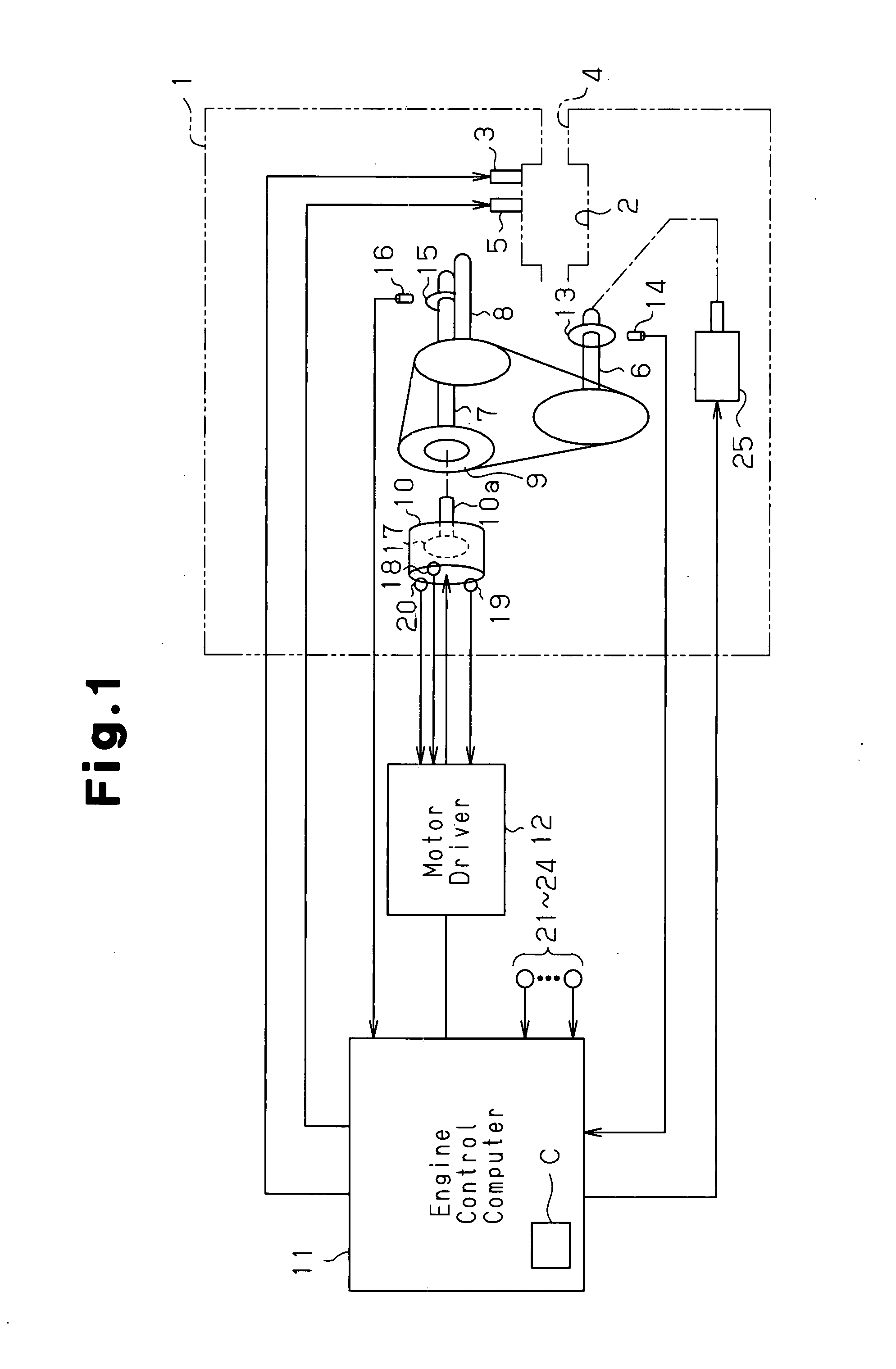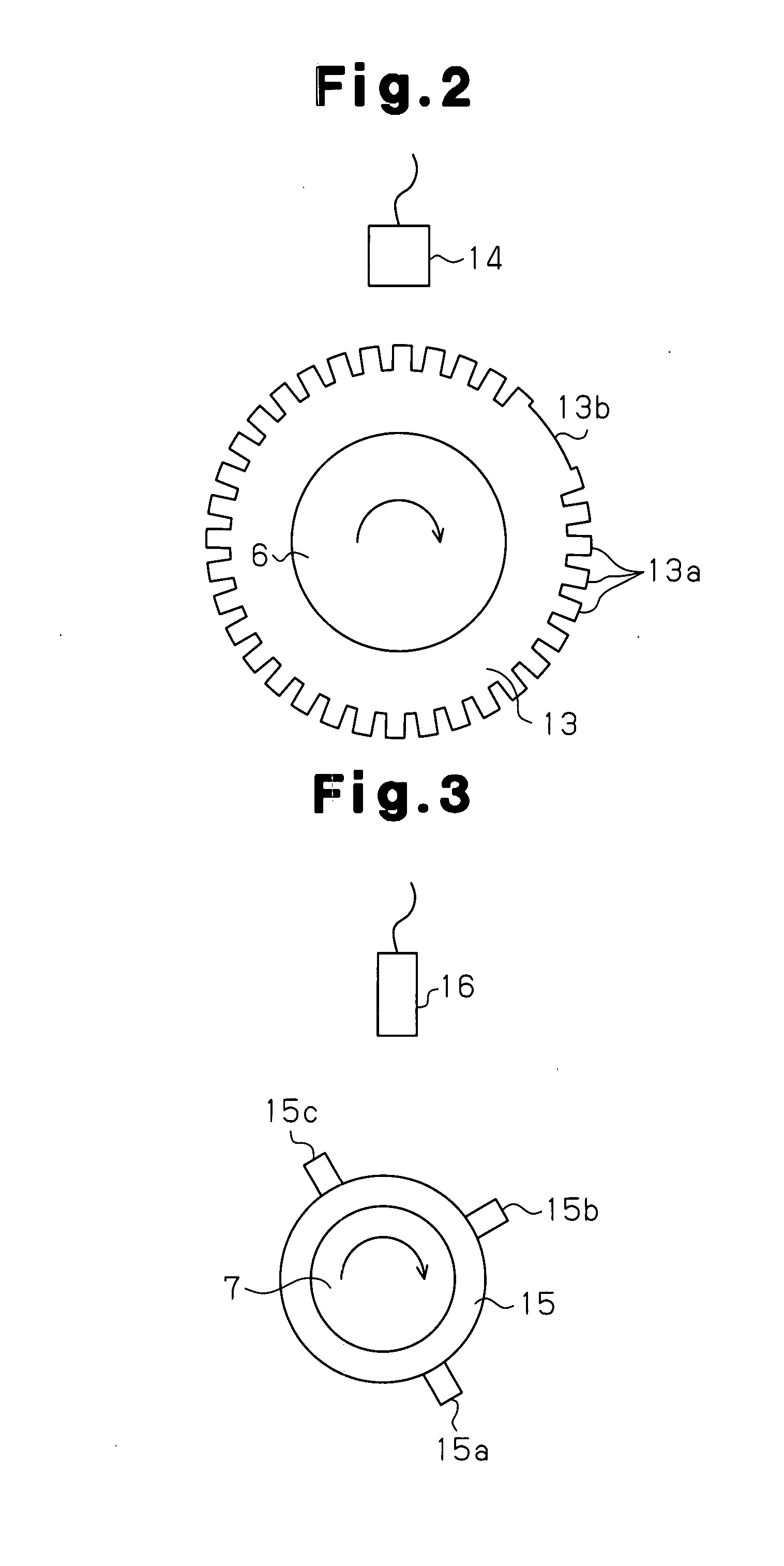Apparatus and Method For Controlling Internal Combustion Engine
a technology of internal combustion engine and apparatus, which is applied in the direction of machines/engines, non-mechanical valves, output power, etc., can solve the problems of inability to detect the actual crank angle, the discrepancy between the counter and the actual crank angle after installation, and the inability to install an additional crank position sensor. to achieve the effect of improving the starting performance of the engine and ensuring detection
- Summary
- Abstract
- Description
- Claims
- Application Information
AI Technical Summary
Benefits of technology
Problems solved by technology
Method used
Image
Examples
Embodiment Construction
[0036]An automobile multi-cylinder engine 1 according to a preferred embodiment of the present invention will now be described with reference to FIGS. 1 to 22.
[0037]As shown in FIG. 1, the engine 1 has combustion chambers 2 (only one is shown) into each of which fuel is injected from a fuel injection valve 3. Also, air is drawn into each combustion chamber 2 from an intake passage 4. The air-fuel mixture in each combustion chamber 2 is ignited by an ignition plug 5. When such ignition of air-fuel mixture occurs so that the air-fuel mixture is burned, the combustion energy drives engine 1, in other words, rotates a crankshaft 6. A starter 25 is connected to the crankshaft 6. The starter 25 forcibly rotates the crankshaft 6 when starting the engine 1 (cranks the engine 1).
[0038]Rotation of the crankshaft 6 is transmitted to an intake camshaft 7 and an exhaust camshaft 8. The rotation transmitted from the crankshaft 6 causes the camshafts 7, 8 to rotate 360° per 720° rotation of the cr...
PUM
 Login to View More
Login to View More Abstract
Description
Claims
Application Information
 Login to View More
Login to View More - R&D
- Intellectual Property
- Life Sciences
- Materials
- Tech Scout
- Unparalleled Data Quality
- Higher Quality Content
- 60% Fewer Hallucinations
Browse by: Latest US Patents, China's latest patents, Technical Efficacy Thesaurus, Application Domain, Technology Topic, Popular Technical Reports.
© 2025 PatSnap. All rights reserved.Legal|Privacy policy|Modern Slavery Act Transparency Statement|Sitemap|About US| Contact US: help@patsnap.com



